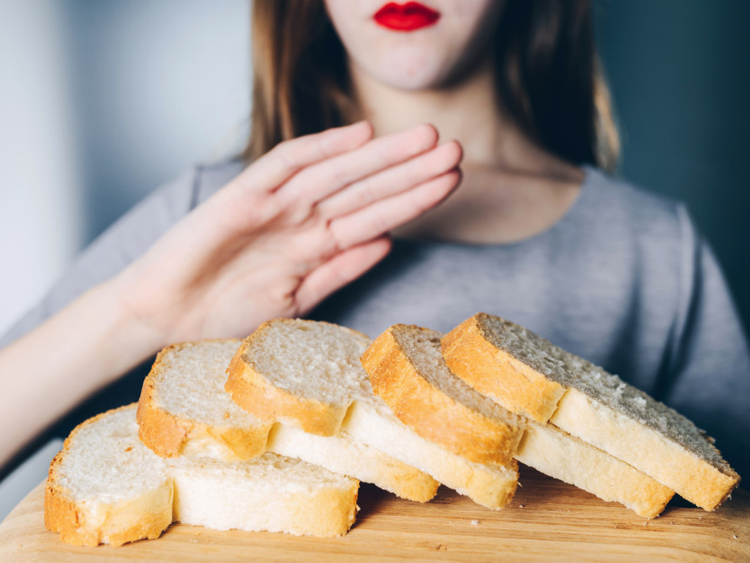
In the UK, one in 10 people now avoid gluten, and they can increasingly choose from a wide array of food products to help them do so. Last year, the “free-from” market, with gluten-free as its anchor, showed a 27 per cent rise in sales. Gluten-free bread, cakes and pasta have become a staple of supermarkets. In the lucrative cookbook sector, there are gluten-free offerings by everyone from Ella Woodward to Novak Djokovic, with the tennis star crediting the diet with turning his health around. Yet, as surely as the popularity of gluten-free eating has grown, scepticism of the “it’s all in the mind” sort has matched it.
The only non-contentious fact is that people diagnosed with coeliac disease — just 1% of the UK population — indisputably suffer from a very real autoimmune disorder where eating gluten, the umbrella terms for various gluey proteins found in wheat, barley and rye, causes damage to their small intestine. But battle commences when we consider the far larger number of people, who are not coeliacs but report similar unpleasant symptoms — diarrhoea, wind, constipation, stomach pain, cramping, bloating, fatigue — and find that these are alleviated when they cut out gluten.
The gluten avoidance trend has really taken off in the past decade. When Miley Cyrus went public about her “gluten allergy” in 2012 and, in 2013, Gwyneth Paltrow published a gluten-free recipe book, the standard bearers for the anti-gluten movement were born.
It is noticeable that gluten sensitivity seems to preoccupy women more than men, which instantly locates it on gendered territory where it can be dismissed as an imaginary malady of attention-seeking, fashion-conscious, mainly younger women. Statistically, women are more likely than men to be gluten sensitive: two to three times as many women as men suffer from coeliac disease, going up to six times more for non-coeliac gluten sensitivity.
In one recent study, researchers concluded “Participants’ reasons for gluten avoidance in the absence of a medical diagnosis of coeliac disease were, for the most part, reasoned and logical.”
So why should grains that we have been eating for as long as 14,000 years suddenly become too hard to stomach? Maybe we need to rephrase that question: what is it about the grain-based staples that most of us are eating, that could be causing population-wide digestive difficulties? Or, as the Real Bread Campaign co-founder, Andrew Whitley, says: “We should be asking why the food system has done this to us, asking how it dares to sell us crap that’s made us like this”.
The wheat we are eating has been bred, largely at the behest of food manufacturers, to have higher levels of stronger gluten. (The more gluten, the fluffier and more voluminous your loaf.)
Our great-grandparents’ grain was not sprayed with pesticides, either. These days, it is common practice among non-organic farmers to spray their wheat on days before harvest with the controversial pesticide glyphosate, to dry off the crop for processing. The International Agency for Research on Cancer classifies it as a probable human carcinogen.
In the factory, heavily automated bakery conglomerates have replaced traditional methods with a chemistry set of additives and undisclosed processing aids, notably enzymes synthesised in the laboratory. These enzymes, and the 27 potential allergens that scientists have identified in wheat, are now firmly in the frame for causing “baker’s lung”, an occupational hazard of bakery factory workers.
Although all the additives used to make modern bread and processed food products are “generally recognised as safe”, in the circumspect language of the US Food and Drug Administration, some researchers have associated a number of food additives with some of the gut alterations seen in both coeliac and non-coeliac gluten sensitivity, as well as in inflammatory bowel disease. The cumulative cocktail effect of modern combinations of additives we eat could also be cause for concern, as the safety of each is only tested in isolation and any possible cocktail effect has not been systematically studied.
For the past 20-30 years, industrial bakeries have also been adding extra gluten to their products, known as “vital gluten” in the trade, but often labelled innocuously as “wheat protein”. Consumers are eating more gluten now than ever before. And, in a strategy to make their goods look as big and as good-value as possible, they have also bumped up the amount of yeast (another known food allergen) in their formulations.
Today’s industrial baked goods sound even less like a recipe for digestive comfort when you consider that the most crucial step in traditional bread making — long, slow fermentation — has been stripped largely out of the industrial manufacturing process, making it possible to create finished loaves in two hours, as opposed to the traditional time frame of 16 hours or more.
“We hear time and again from people who have found they can eat one type of loaf but not another,” says Chris Young of the Real Bread Campaign. “Some people report their trouble is triggered by contemporary strains of modern wheat, while real bread made with heritage varieties are fine. Other people have found that the only bread they can enjoy is genuine sourdough, made by a long fermentation process using a live starter sourdough culture.”
So, while gluten need not be a digestive disrupter, per se, it could perhaps become so when encountered in its inadequately fermented forms, particularly when it is mixed with pesticide residues, food additives and processing aids that could be troublemakers in their own right.
And what about fibre, which is enshrined in many healthy eating guidelines? We are exhorted to eat products made from whole grains, such as those with lots of wheat bran, rather than white refined ones, but, without thorough fermentation to break down whole grains into a digestible form, might the insoluble fibre in such products inflame our guts? Yet most of us still assume, because we have been told over and over again, that “brown is best”.
People dogged by the spectrum of symptoms labelled as a gluten intolerance turn hopefully, or in desperation, to the highly lucrative larder of gluten-free alternatives on our shelves. But the vast majority of gluten-free creations contain the same questionable enzymes and additives that food technologists use in the standard, gluten-containing industrial equivalent.
Part of the I-don’t-believe-you resistance to the concept of gluten sensitivity is the fact that many people latch on to gluten-free as a way to lose weight. But if an excess of sugar and carbohydrate foods is the real driver of obesity, as is increasingly hypothesised, then all those people cutting out gluten-containing carbs as a sort of pin-the-tail-on-the-donkey exercise in tackling spreading thighs and bulging bellies may not be too wide of the mark.
Given the troubled state of the world’s guts and the girth of its waist, our fixation on gluten is unlikely to disappear any time soon, although a rival food fashion trend could be its nemesis. Google searches for “plant-based diet” spiked over the past year, while searches for “gluten-free diet” have gradually declined since a 2012 peak.
There is a conflict here. Mapping out a realistic, workable diet free from gluten yet big on plants is nothing if not challenging. If, that is, you want to eat a real-food diet and stay as far away from ultra-processed junk as possible.













